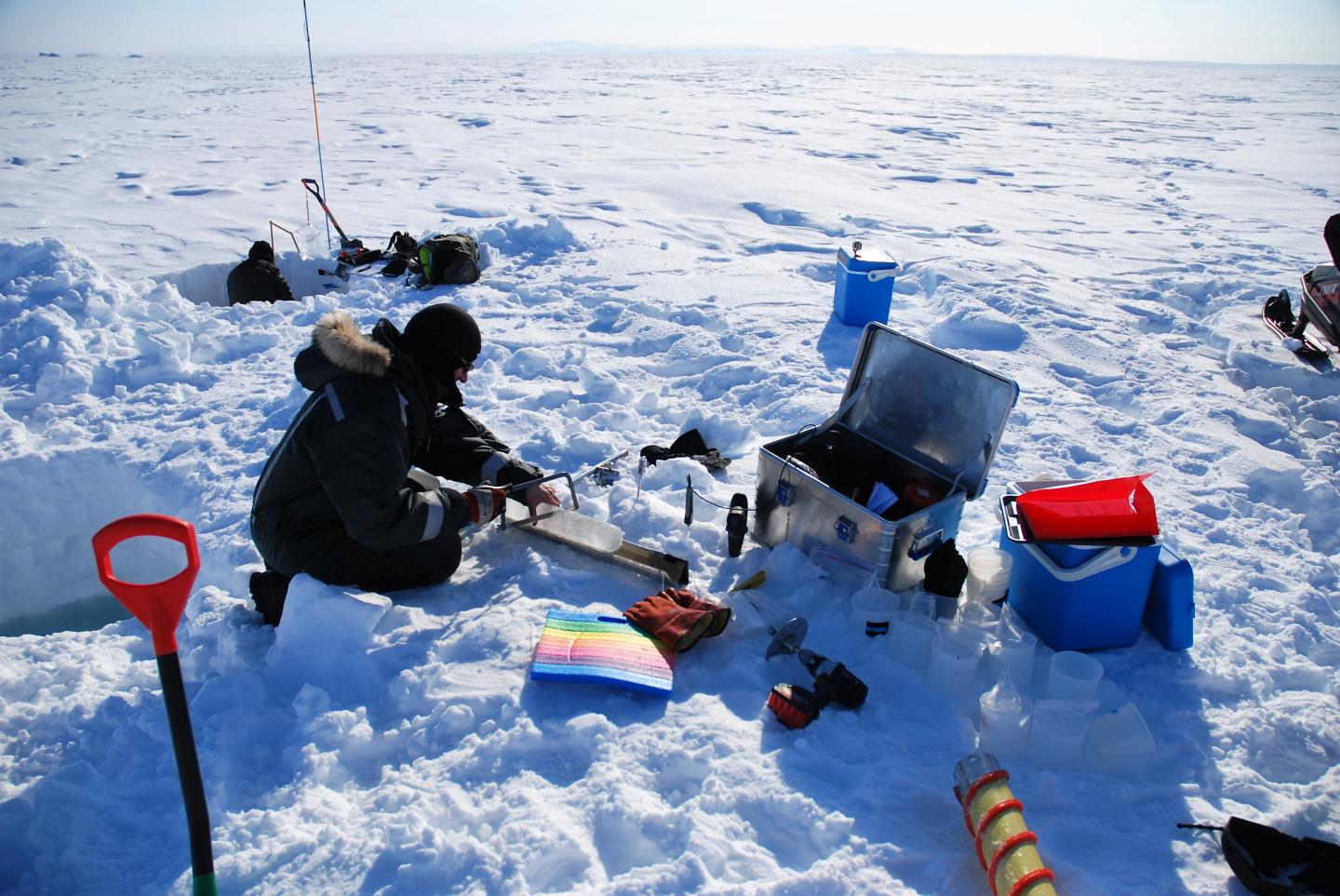Arctic sea ice algae need less light to grow than researchers thought. Here’s why that matters
Understanding the "engine of life in the central Arctic Ocean" is critical to understanding the rest of region's changing ecosystems.

Large-massed animals like polar bears and walruses might attract much of the news coverage in the Arctic. But smaller players like sea algae also play a big role in far north ecosystems.
That’s why recent discoveries about these microscopic algae, called the “engine of life in the central Arctic Ocean” are important to understanding what may happen as the region undergoes rapid changes. A new study from researchers at Aarhus University in Denmark, the University of Alaska Anchorage and the University of London, sheds light on, well, the amount of light needed for these sea ice algae to bloom and grow.
The study adds to a growing body of Arctic work from lead author Kasper Hancke of Aarhus University, who has conducted research in Greenland, Svalbard and Canada.
“The more I work there, the more I get fascinated by how strong the urge for life is in these extreme environments, at the same time very fragile,” Hancke wrote in an email.
After a winter of darkness, sea ice algae, which require sunlight to live, begin to grow in the spring and summer. But while scientists initially thought that ice algae could not obtain enough light until the snow and ice had thinned, the new study shows that the algae are more resilient once thought.
The researchers found sea ice algae buried underneath 2 meters of sea ice and snow began to grow with only 0.17 micro-mol photons per square meter per second. (For comparison, bright sunlight is about 2,000 micro-mol photons per square meter per second.)
The study was conducted in April and May 2015 near the Villum Research Station in northeast Greenland. Here, the researchers drilled holes into five different spots on the frozen Wandel Sea, collecting a variety of measurements including snow thickness, ice thickness, and temperature, as well as ice cores from each site. Observations also included the number of ice algae on the bottom of the ice and light measurements.
The team faced extreme temperatures, including gathering measurements on undisturbed sea ice in negative 25 degree Celsius temperatures. These conditions make it hard to study ice algae growth at any time of the year, which is perhaps why there were so few data sets estimating its minimum light requirement before this study.
“It is logistically very difficult to assess ice algae in the field in the first place,” wrote Hancke.
Using these samples and measurements, the researchers then calculated how much light intensity the algae received and when it started blooming. The fact that photosynthesis was happening at such low light levels surprised the scientists, said Lars Chresten Lund-Hansen, another author of the study.
While parts of the Arctic Ocean are typically covered by a thick sheet of ice, the snow that sits on top of the ice generally regulates the amount of light that reaches the algae and determines when it will bloom. That’s because snow is more efficient at reducing the intensity of light as it passes through, a process that is known as light attenuation.
While conducting the study in May, the researchers found that the snowpack had a strong temperature difference between the top layer and the bottom layer of snow touching the ice, with the temperature increasing from top to bottom. This temperature change made the snow grains at the bottom of the snowpack bigger, changing the attenuation coefficient of the snow cover and allowing more light to pass through.
The fact that the sea algae can bloom with such low light is important for the whole Arctic food web. Sea algae, along with phytoplankton, are one of the primary sources of food for zooplankton, a critical element in the food chain. Recently, scientists have found that a large majority of polar bears’ diets consist of animals that depend on ice algae.
“In the early spring, there is just not enough light for phytoplankton to grow, so if there are zooplankton out there, they are mostly eating ice algae,” said Virginia Selz, a Ph.D. student at Stanford who has researched Arctic phytoplankton and ice algae.
This finding could be helpful for models that project how much phytoplankton or sea ice algae there is in the region — and what may happen as the region warms.
“When someone is trying to model primary production and sea ice for the broader Arctic, it’s good to know when that should that should start or under what light conditions that is actually possible,” Selz said. “So I think [the study] is really helpful for that.”
As the region warms, Hancke wrote in an email that the snow’s optical properties will change, which will allow more light to reach the ice algae.
“That will stimulate algae to drive primary production earlier in the season than presently and potentially make the blooms larger,” Hancke wrote.
But, what this means for the larger ecosystem is unclear. While Selz said that more light earlier in the season may translate to more algae, she also brought up the fact that the Arctic sea ice season is shortening.
“So even though there are more ice algae early on, is there more total ice algae for the whole season?,” she asked.